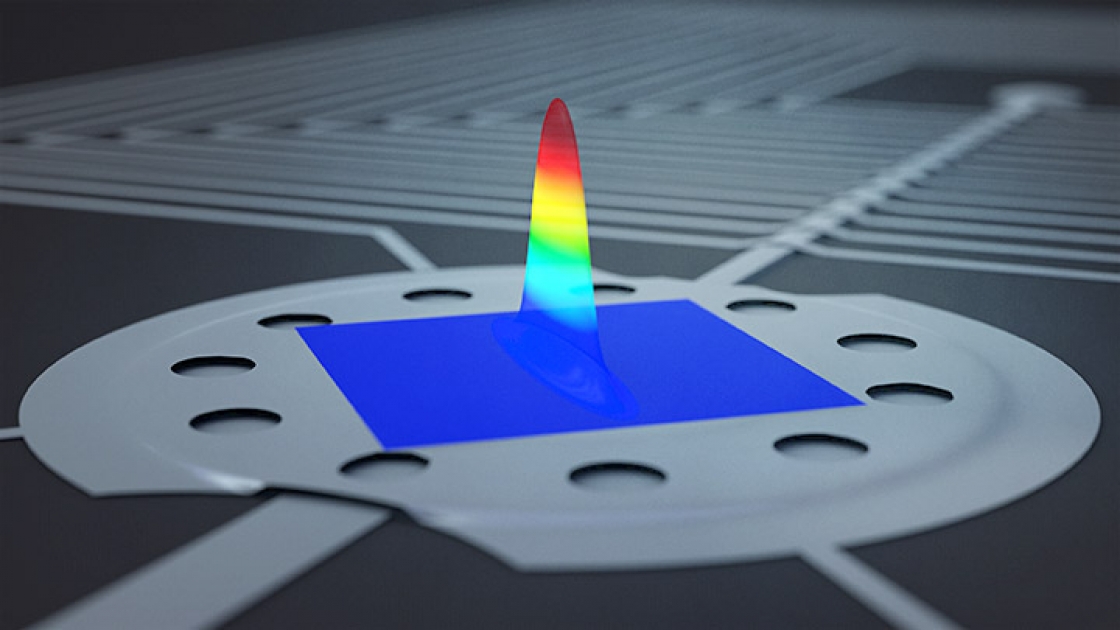At JILA, scientists work on mechanical oscillators which are the size of a grain of salt. They may be tiny, but they are the heartbeat of quantum technology, and are currently a promising technology for networking quantum computers.
“If you push on a mechanical oscillator, it's going to move,” said Robert Delaney, a graduate student in the Lehnert Lab. The oscillator vibrates like a tiny drum. As it moves it translates information from one signal to another, a crucial task for devices from cell phones to computers.
“You'd take information from the microwave domain, convert it to motion, and then convert it to the optical domain,” Delaney said.
And in principle these mechanical oscillators could do that almost perfectly, he added, if it weren’t for noise. Not all noise can be picked up by your ears. In physics, any unwanted fluctuation in the medium around your equipment is noise. Noise can come from a lot of sources: heat, other electric signals. Miniscule fluctuations called zero-point fluctuations are present even in the vacuum of space. Just measuring the movement of the drum creates noise. No matter where it’s coming from, noise can distort the signals to and from the oscillator.
Now the Lehnert Lab at JILA has found a way to quiet that noise around their measurements. And it turns out when you do that, you get more than a quieter drum. This method also beautifully illustrated one of the most famous tenets of quantum mechanics—the Heisenberg uncertainty principle.



 The Physics Frontiers Centers (PFC) program supports university-based centers and institutes where the collective efforts of a larger group of individuals can enable transformational advances in the most promising research areas. The program is designed to foster major breakthroughs at the intellectual frontiers of physics by providing needed resources such as combinations of talents, skills, disciplines, and/or specialized infrastructure, not usually available to individual investigators or small groups, in an environment in which the collective efforts of the larger group can be shown to be seminal to promoting significant progress in the science and the education of students. PFCs also include creative, substantive activities aimed at enhancing education, broadening participation of traditionally underrepresented groups, and outreach to the scientific community and general public.
The Physics Frontiers Centers (PFC) program supports university-based centers and institutes where the collective efforts of a larger group of individuals can enable transformational advances in the most promising research areas. The program is designed to foster major breakthroughs at the intellectual frontiers of physics by providing needed resources such as combinations of talents, skills, disciplines, and/or specialized infrastructure, not usually available to individual investigators or small groups, in an environment in which the collective efforts of the larger group can be shown to be seminal to promoting significant progress in the science and the education of students. PFCs also include creative, substantive activities aimed at enhancing education, broadening participation of traditionally underrepresented groups, and outreach to the scientific community and general public.